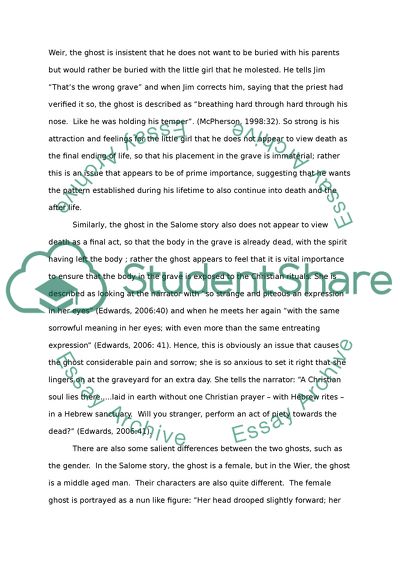Cite this document
(Differences between the Two Ghosts Literature review Example | Topics and Well Written Essays - 1750 words, n.d.)
Differences between the Two Ghosts Literature review Example | Topics and Well Written Essays - 1750 words. https://studentshare.org/literature/1739413-writing-the-supernatural-exam-paper
Differences between the Two Ghosts Literature review Example | Topics and Well Written Essays - 1750 words. https://studentshare.org/literature/1739413-writing-the-supernatural-exam-paper
(Differences Between the Two Ghosts Literature Review Example | Topics and Well Written Essays - 1750 Words)
Differences Between the Two Ghosts Literature Review Example | Topics and Well Written Essays - 1750 Words. https://studentshare.org/literature/1739413-writing-the-supernatural-exam-paper.
Differences Between the Two Ghosts Literature Review Example | Topics and Well Written Essays - 1750 Words. https://studentshare.org/literature/1739413-writing-the-supernatural-exam-paper.
“Differences Between the Two Ghosts Literature Review Example | Topics and Well Written Essays - 1750 Words”. https://studentshare.org/literature/1739413-writing-the-supernatural-exam-paper.


